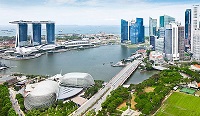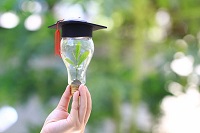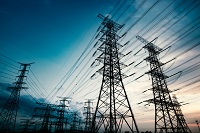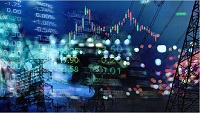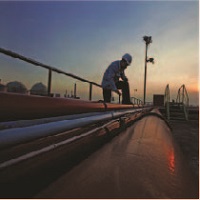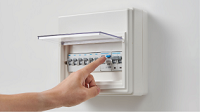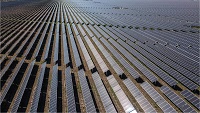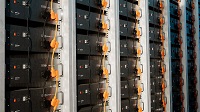For more information, please refer to:
Media Releases
29 Oct 2019
Our Energy Story will harness "4 Switches", energy efficiency and the power of co-creation
to create a sustainable energy future for Singapore.
- Singapore's energy sector has come a long way since its early days. Over the last 50 years, we have moved from oil to natural gas for cleaner power generation. We are also starting to see more solar energy on rooftops and reservoirs. We have improved the reliability of the energy system, while keeping costs affordable.
- Looking ahead, climate change is a challenge that requires us to change the way we use and produce energy, especially if energy demand continues to rise with economic growth. Singapore's energy sector will need to evolve in order to achieve our vision of a clean and efficient energy future.
The "4 Switches" - Minister for Trade & Industry Chan Chun Sing at the Singapore International Energy Week (SIEW) 2019 today spoke about the need to create our Energy Story together. The Energy Story will harness "4 Switches" to guide and transform our energy supply. This will be supported by greater efforts in energy efficiency to reduce energy demand. The "4 Switches" will comprise:
- 1st Switch: Natural Gas – About 95% of Singapore's electricity is generated using natural gas, the cleanest fossil fuel today. Natural gas will continue to be a dominant fuel for Singapore in the near future as we scale up our other switches. Government will help generation companies improve the efficiency of their power plants.
- 2nd Switch: Solar – This remains Singapore's most promising renewable energy source. We are on track to reach our solar target of 350 megawatt-peak (MWp) by 2020. The Government is working towards achieving a new solar target of at least 2 gigawatt-peak (GWp) by 2030, and an energy storage deployment target of 200 MW beyond 2025.
- 3rd Switch: Regional Power Grids – Singapore will also explore ways to tap on regional power grids to access energy that is cost-competitive. This could be realised through bilateral cooperation or regional initiatives.
- 4th Switch: Emerging Low-Carbon Alternatives – We will also look into emerging low-carbon solutions that have the potential to help reduce Singapore's carbon footprint. These could include carbon capture, utilisation or storage technologies and hydrogen.
- The Government will work with companies, researchers and the public to deploy at least 2 GWp of solar by 2030 – enough to meet the annual power needs of around 350,000 households in Singapore[1]. This would increase solar adoption in Singapore by about 8 times from today's installed capacity. To facilitate greater solar adoption, Singapore will deploy and maximise solar panels over available spaces. These could include rooftops, reservoirs and offshore spaces. Besides increasing our clean energy supply, solar will improve energy security by tapping on alternative energy sources.
More Energy Storage for More Solar - Energy storage can address solar intermittency and enhance grid resilience by managing mismatches between electricity supply and demand. The Energy Market Authority (EMA) will support a large-scale, nationwide deployment of Energy Storage Systems (ESS), with a target of 200 MW beyond 2025. To do so, EMA will work closely with the industry and agencies to build test-beds and standards to support the deployment of ESS in Singapore.
- Among the collaborations will be a research grant awarded under EMA's partnership with the Korea Institute of Energy Technology Evaluation and Planning (KETEP). This will help promising Singaporean and Korean firms to co-develop innovative solutions towards the management and safety of ESS. Project details can be found in the ANNEX below.
Co-creating our Energy Story - Our Energy Story is a long-term effort, and everyone has a role to play in creating this story. To make this vision a reality, the Government will work hand-in-hand with all stakeholders, including businesses, research communities, youths and young scientists, the Union of Power and Gas Employees and the public.
[An infographic on the Energy Story is in Annex A]
[1] This assumes (a) a DC-to-AC conversion ratio of 0.77; (b) a solar PV load factor of 14%, which is the average percentage of solar output expected in a year; and (c) an average monthly household electricity consumption of 444.3kWh (based on 2017 data).
